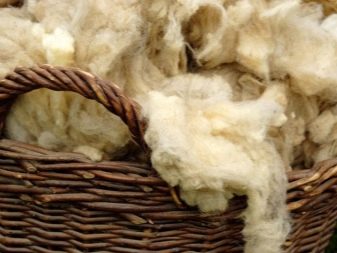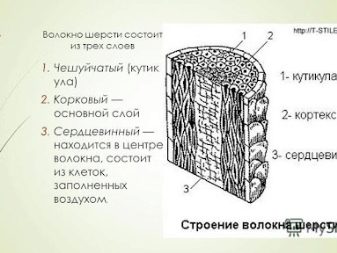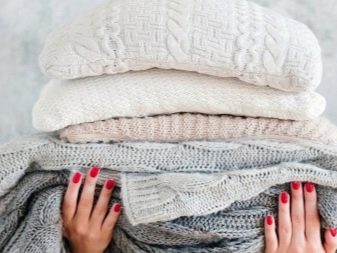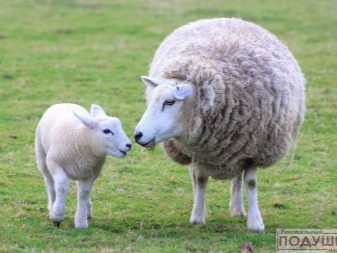Varieties of wool and its use

Humans started using animal hair several millennia ago. Previously, skins were used to make clothes and shoes. Now they have learned to collect wool and process it, getting yarn and fabric. There are several varieties of this primary raw material. First of all, the division goes according to the type of animal. The composition and structure directly depend on this.



Description
Wool - animal hair, collected for further processing and use. It belongs to the category of materials of natural origin, therefore it often has a rather high cost.
Wool is obtained in two ways: by shearing and combing. In this case, the animal itself does not suffer in any way from the procedure passed. It is noteworthy that most of it comes from sheep's wool.
Production is established in various countries, including Australia, Argentina, England, New Zealand, Russia, some Asian and African states.


Wool as a primary raw material and material has a lot of useful properties. They are as follows:
- good thermal insulation;
- the fabric is quite dense;
- natural material rarely provokes an allergic reaction;
- even when wet, it is able to keep warm.
Among the shortcomings, the following points should be noted:
- wool shrinks when washed;
- differs in high cost;
- Woolen products often prick when worn directly on the body.


Composition and structure
The wool has a unique composition. The main component is a protein called keratin. Its peculiarity lies in its high sulfur content.
Woolen hair consists of three parts.
- The stem is a keratinized part located directly above the surface of the animal's skin.
- The root is considered a living part of the hair because it is located under the skin. On the one hand, the root is attached to the stem, and on the other, to the bulb.
- The bulb is a very important part as it is responsible for the nutrition and further growth of the hair.
If we talk about the histological structure, then there are two component parts: scaly and cortical layers. An important indicator of wool is the thickness of the hair, which is measured in micrometers.


Views
Several varieties of wool are used in the industry. Sheep and camel are rightfully considered the most widespread and demanded ones. But there are other options as well.
Goat hair and down
This category includes mohair, cashmere, and all types of down. In terms of consistency, the raw materials are more homogeneous and soft. If, upon receipt, the combing method is used, then the fluff turns out to be softer. The most famous varieties are:
- angora;
- Orenburg;
- Kashmir
These goat breeds have gained popularity because of their rather thin hair (16-18 microns).


Camel's wool
Camel wool or Camel wool is thin and lightweight, but at the same time quite strong and highly hygroscopic.
A feature of this raw material is its high fiber density. This ensures good breathability.


Exotic species
Exotic species include alpaca, llama and vicuna wool. All of these animals belong to the camelid family. The material is lightweight and has a high ability to retain heat. The disadvantage of exotic wool is its high cost.


Sheep's wool
Sheep wool is characterized by increased thermal conductivity. Its popularity is based on its low cost. By structure, the fibers are dense and elastic, have a spiral shape. Thanks to these qualities, sheep wool products are very voluminous. Conventionally, this type can be divided into several separate categories, each of which has a unique name.
- Wolle - pure wool, which is used to create products of average quality.
- Schurwolle, new wool, virgin wool - the raw materials themselves and the resulting products differ from others in a high level of quality. This is possible due to the fact that there are virtually no impurities in the wool.
- Lambswool - under this name the wool of lambs, which were sheared for the first time, is produced and sold.
- Merino wool - incredible quality merino wool. The products and the raw materials themselves are considered expensive.
The disadvantage of sheep's wool is the presence of an unpleasant odor, which takes a very long time to get rid of.


Varieties of woolen fabric
After the wool is obtained in one of the ways, it goes to production. There it is processed, converted into yarn, from which fabrics are made. They differ from each other in characteristics. The most important of these are density and hygroscopicity.
There are several varieties of woolen fabrics.
- Rough cloth - they can be safely distinguished into a separate category, since this is a rather tough material. They are characterized by a rough and prickly surface. The fabric is obtained by sequentially weaving threads of increased density. The disadvantage is that the fabric is very heavy in weight.
- Fine cloth - this category includes material with a loose structure. The advantage of the material is light weight and good heat retention. Due to these properties, there are many options for using the material.
- Combed (worsted) fabrics. The peculiarity lies in the fact that the intertwined threads form a specific pattern.
- Felted fabric is also relatively rough. It is used most often for the production of winter footwear.
- Muslin - This is a very thin knitted fabric, which consists of various threads: wool, cotton, linen.
- Gabardine - a material that is obtained from merino wool. It has a slight gloss.
- Bouclated - has a loose structure, moderately fleecy, thick and multi-colored.
- Boiled cloth - another variety, similar to knitwear.


And also there is a faux wool fabric. It can be safely distinguished into a separate category, since its distinctive features are artificial origin and relatively low cost.
Application area
The area of application of woolen material is not inferior to its variety. The fabric is very often used for sewing upper demi-season and winter clothes: coats, jackets. Besides, various materials, which include wool, are used for sewing everyday clothes. Most often these are jackets, dresses, trousers, suits.
And also woolen fabrics are used in the manufacture of accessories, various textile items for the home (carpets, curtains, blankets, bedspreads, upholstered furniture capes). Covers for car seats are often made from the same material.


Care features
As already noted, the fabric, regardless of its type, is capable of deforming during washing, as well as during use. That is why it is necessary to take proper care of the products.
You should start with the storage process. After purchasing or making your own thing, it must be placed so that it does not deform. Even when it comes to clothes, it is not recommended to use clothes hangers for this, since the thing will stretch from prolonged hanging. The best storage option is to fold it on shelves in a closet or chest of drawers.
And you should also protect things from pests. The most common of these is the mole. In order for this insect not to harm, it is recommended to store special lavender or citrus sticks in a woolen closet.


Clothes made from natural materials should be washed by hand at a water temperature of no higher than 30 degrees. If you use a machine wash, then you need to select the delicate mode without spinning. Dry cleaning is prohibited or should be delicate. Do not use aggressive detergents and cleaning components.
It is best to dry things unfolded in a tumble dryer. If hung on hangers or a battery, in most cases this will result in deformation.
The main advantage of wool items is that they don't wrinkle. If, nevertheless, there is a need for ironing, then this should be done at a minimum temperature and very carefully.


If you comply with all of the above requirements, then woolen things will last a long time and will remain in proper form. If pellets appear on the surface, it is recommended to carefully remove them using a special machine.








